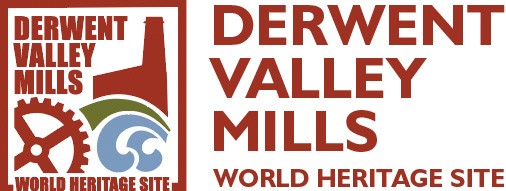Derwent Pulse

Derwent Pulse
The first strike of the bell above Arkwright’s Cromford Mill changed time forever. Gone was the time of agriculture, measured by the rise and fall of the sun, the monthly phases of the moon and the passing of the seasons. Arkwright’s bell sounded the first beat of clock time, a precise regularity that listened to nothing but the ever quickening beat of the industrial revolution. Echoed in the rhythm of Arkwright’s Water Frame the chime introduced mass production not only to the Derwent Valley but to the rest of the country and the world beyond. Everything upstream of the Derwent Valley Mills is the past, everything downstream, the future.
Derwent Pulse, a Derwent Valley Mill World Heritage Site commission by Charles Monkhouse, was a light flow the length of the Derwent that explored the river and its heritage.
Light Flow
Over a lunar month lights travelled from the Derwent’s Pennine source to its mouth on the Trent. Each day formed a distinct passage as the lights responded to the landscape and its people: tracing hidden streams of Bleaklow; redrawing the ancient boundaries; illuminating past routes across Derbyshire; identifying settlements lost under the Upper Derwent Dams; floating rainbows across Ladybower Reservoir; electrifying Chatsworth House; racing rapids at Matlock; parading through Matlock Bath’s Illuminations; cascading weirs at Milford; lighting river beds in Derby; meandering onwards to the Trent.
Shepherding
Each passage of lights was shepherded by local schools and riverside communities. Ramblers and walkers navigating the lights through mountains, schools forming an electric parades beside the river, canoe clubs accompanying the lights in water, Level Centre clients dancing with the lights at Rowsley, rowers at Belper serenading the lights in river gardens, while heartbeats of Derby’s Silk Mill visitors synchronised with its pulse.
Derwent Chart
A new map, Derwent Chart planned and organised the light flow – a research tool and scheduler, teasing out the metaphors of Derwent Pulse: rivers & passages, journeys and lifelines, people and families, sources and destinations, progress and enlightenment, the beat of the past and beat of the future. The 6 metre map is a palimpsest: maps from estates, local studies centres and parish records brought up to date by artists working with local parishes and schools.
Charting the Future
Artists working with parishes and schools that touch the Derwent worked with teachers, pupils and communities: exploring the river, its environment and history; identifying past sites where the river has supported the local economy; suggesting ways the river can contribute to local lives and a sustainable economy; describing lives and futures using metaphors suggested by the river; creating contemporary maps, images and narratives.
Charting the Future, informed by a unique collection of 18 century estate maps, will update Derwent Chart with contemporary maps of the Derwent, suggesting future uses and a vision of personal futures reflected in the river.
Legacy
Images of the light flow, documented by a team of photographers and incorporated in a Legacy Screen, are to be exhibited with Derwent Chart in Derby’s Silk Mill. The archived website will provide a digital record of the entire project. The still pulsating lights will be distributed to industrial world heritage sites which echo the history of the Derwent Valley.

